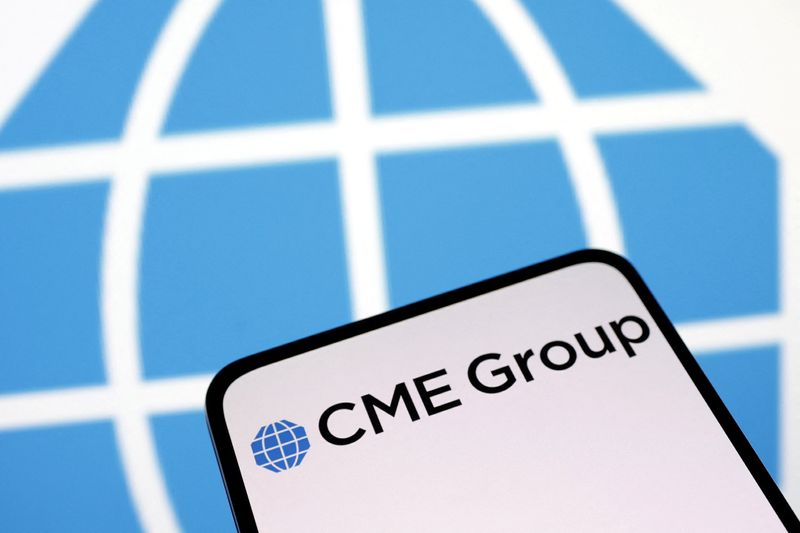(Reuters) -Derivatives exchange CME Group beat Wall Street estimates for second-quarter profit on Wednesday, as record volatility boosted demand for its products, which are often used to hedge against macroeconomic uncertainty.
The company, which facilitates trading of futures and options, benefits during volatile periods, as seen with the onset of U.S. President Donald Trump’s seesawing tariffs in early April.
The volatility index, which reflects the extent to which investors are snapping up protection against volatility, reached record levels in early April before retreating on expectations of trade deals.
Such sharp swings can unravel positions by hedge funds, which often trade on thin margins.
Desks across Wall Street leveraged derivatives to prevent unraveling of such positions, resulting in record average daily volumes of 30.2 million contracts in the quarter, up 16% from a year ago.
Excluding one-time items, profit attributable to CME shareholders was $1.07 billion, or $2.96 per share, for the quarter ended June 30.
Analysts on average had expected a profit of $2.92 per share, according to data compiled by LSEG.
“The number of new retail traders at CME Group increased 57% year over year, contributing to record Micros ADV of 4.1 million contracts in Q2 … ,” CEO Terry Duffy said in a statement.
CME further benefits from greater uncertainty as it prompts market participants to switch to deeply liquid exchanges, analysts have said. It reported cash reserves of $2.2 billion, up 10% from a year ago.
During the quarter, traders also reacted sharply as Trump amped up pressure on Federal Reserve Chairman Jerome Powell to cut interest rates.
CME’s interest-rate products saw record quarterly volumes. Analysts expect demand to rise further as tariff-induced uncertainty and deficit concerns keep the Fed on the sidelines.
CME’s revenue was $1.69 billion, compared with $1.53 billion a year ago. Clearing and transaction fees, which form the bulk of the company’s revenue, jumped 11% to $1.39 billion.
The company’s shares have gained nearly 18.3% this year, but lags rival exchanges Cboe Global and NYSE-owner Intercontinental Exchange. They have risen 23.4% and 21.3%, respectively.
(Reporting by Ateev Bhandari and Atharva Singh in Bengaluru; Editing by Arun Koyyur)

